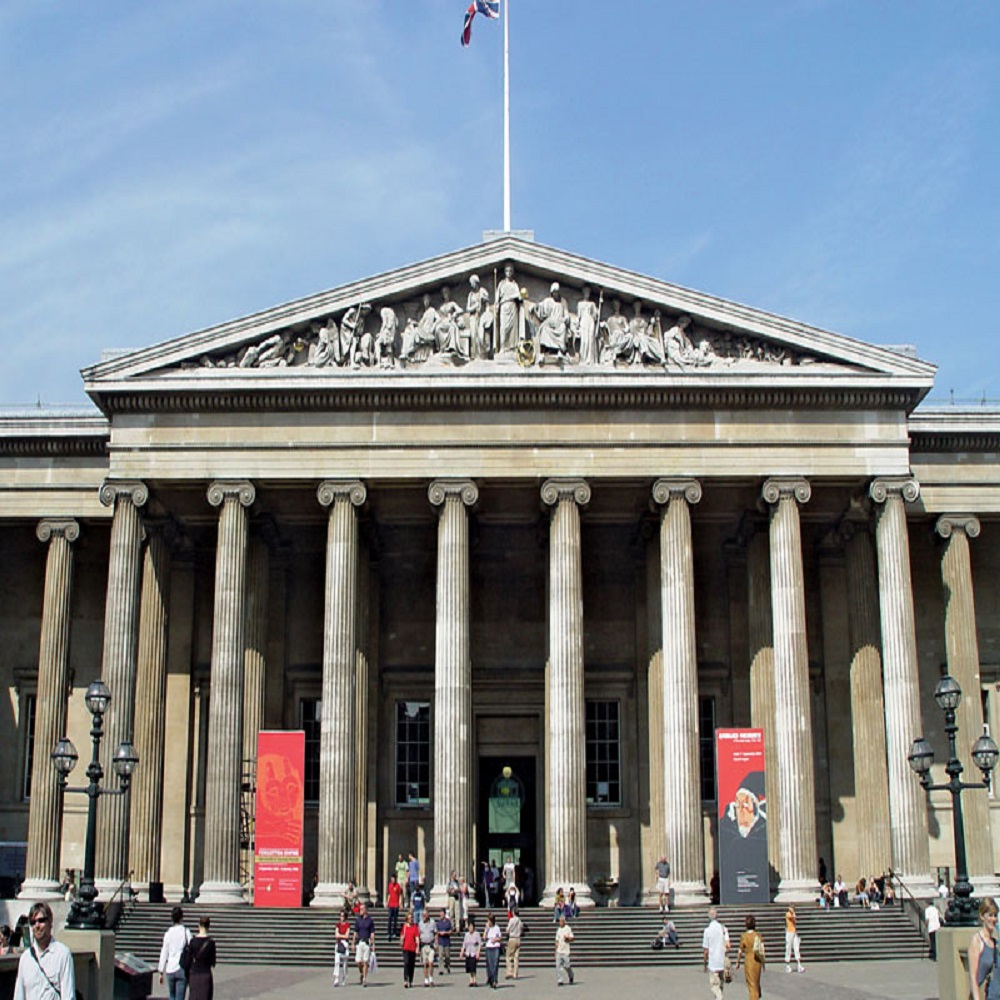FROM YOUR HOME, YOU CAN VISIT THE BRITISH MUSEUM
In the growing virtual age of visual culture, museum-visit to view over two million years of human history is possible. Such viewing has been made easy by The British Museum, which is one of the oldest facilities in the business of documenting history.
Your visit starts from what has been described as Virtual Museum tours using Google Street View. Rated as the world’s largest indoor space on Google Street View, The British Museum offers a virtual visit to more than 60 galleries.
“See highlights like the Rosetta Stone in the Egyptian Sculpture Gallery or discover gems like the beautiful textiles in the Sainsbury African Galleries,” said the museum management in a statement. “Whether it’s a virtual visit or a curator’s corner, there are plenty of ways to keep exploring the British Museum while we’re closed.”
A brass head of an Ooni of Ife, (circa) 1300s-early 1400s is
listed among the five favorites of visitors to The British Museum.
The provenance says the object is a modeled brass head of a
man wearing an elegant headdress, once painted bright red.
It would be recalled that the work was among a number of
brass heads found at a construction site in Ife, in the 1930s. “This one was
bought by the editor of the Nigerian Daily Times, who took it to Britain; the
rest remained in Nigeria (with copies now in the British Museum),” a statement
attached to the piece stressed parts of the provenance already known. “It goes
without saying that these extraordinary works of art must have played an
important part in Ife culture.”
Perhaps, one of the most controversial cultural objects in history, the Ife brass had critics of the west dismissed the fact that it was created by Africans. “So reluctant were they to believe that the people of Ife, 600 years ago, were ‘capable of making something of this quality, that they invented all kinds of tall tales (like they had with the ‘Benin Bronzes’) about them being made by Europeans,” British Museum noted.
“This head, in other
words have been a powerful challenge to common assumptions about cultural
hierarchy, pulling the wool from the eyes of Western complacency about its own
‘artistic superiority’.”
Other artifacts listed among favorites include three corners loaf of bread, Egypt, 2000 BC; Michelangelo’s Adam, circa 1511; bronze Head of the Roman Emperor Augustus, The Meroe Head, 27-25 BC; and a badge depicting Mary Anning, dated 1995.
The virtual visit includes going behind the scenes with the Museum Podcast. The podcast generates presenters Sushma Jansari and Hugo Chapman takes virtual visitors to also meet scientists, curators, authors, and artists.
“You can explore our extensive Prints and Drawings collection to see Old Masters such as Dürer and Michelangelo or see new and exciting contemporary pieces. Dive into the incredible Oceania collection and uncover a vast array of objects from Australia, New Guinea, and the many islands dotted across the South Pacific Ocean.”
Established in 1759, The British Museum has a vast collection,
most of which are acquired controversially, from across the world.







